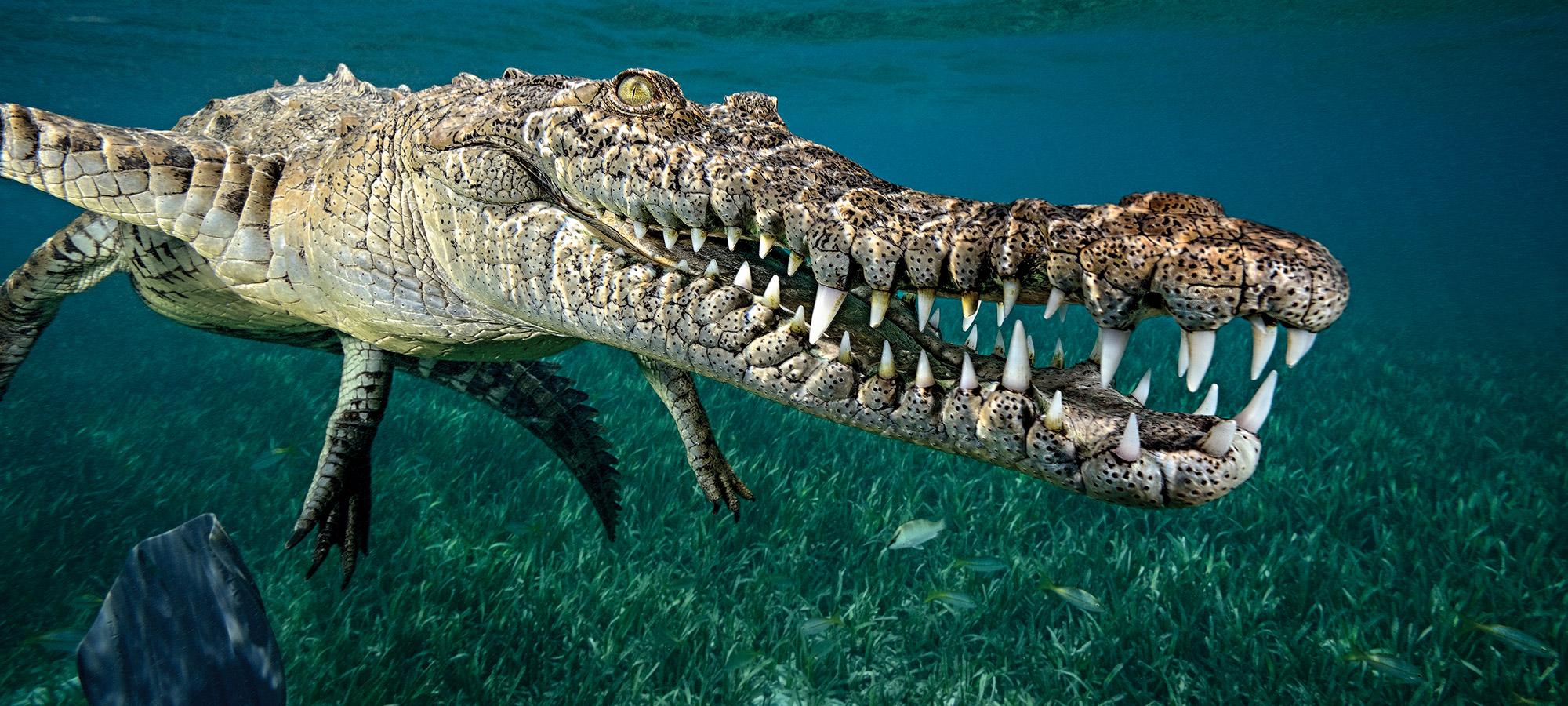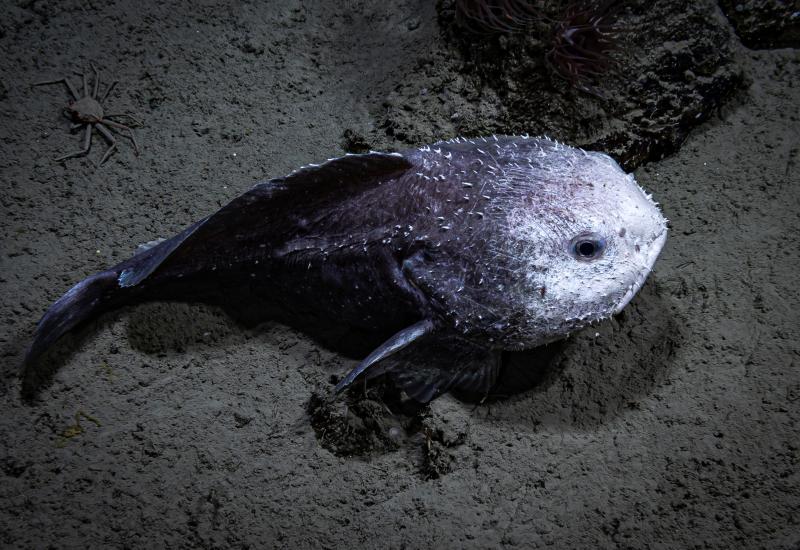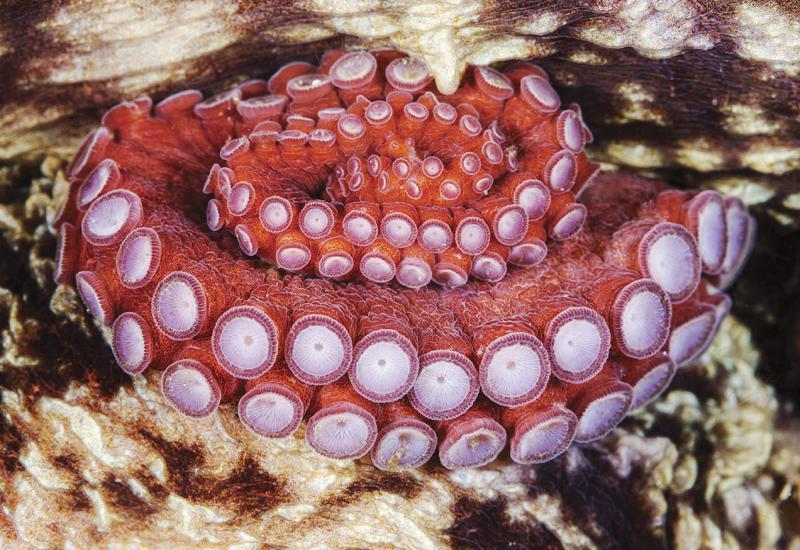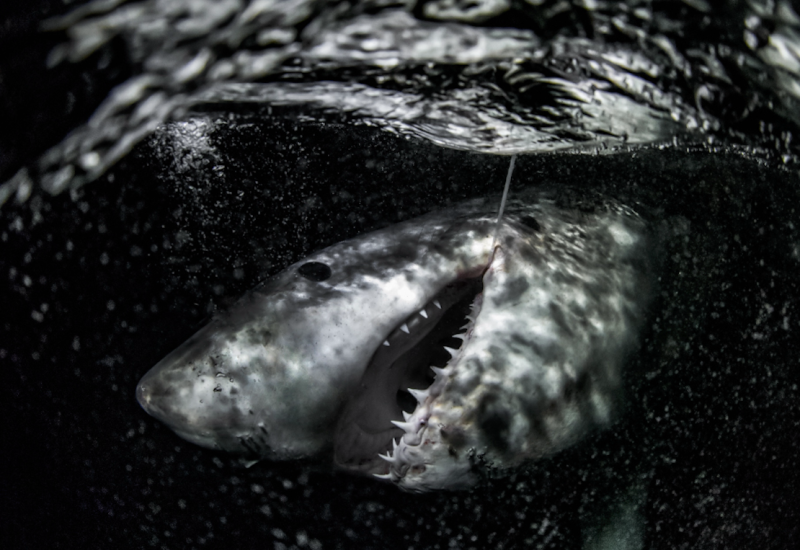An Inside Look at Cuba's Diverse Marine Ecosystem
I round the reef crest and stop in my fins, struck by a wave of emotion.
This is it: The ocean is alive. There is still thriving reef in this corner of the world — and I am witnessing it. I bob on the surface, taking it in: The golden arms of endangered Acropora palmata coral reach toward the sun, creating shelter for tiny fairy basslets and massive cubera snapper. Queen triggerfish float over the reef, and a wall of blue tang casts a shadow on a resting nurse shark. It’s like nothing I have seen underwater.
“Toot, toot!” I hear someone calling through a snorkel and snap out of my dreamy float. It’s one of the only human sounds we hear in Cuba’s Jardines de la Reina, or Gardens of the Queen, and it means someone has found something. “Toot, toot, moray eel!” “Toot, toot, shark!” “Toot, toot, eagle ray!” We each choose what seems most enticing and fin over, cameras ready, to lay eyes on yet another rare species. Or, in some cases, to see in-water a unique feature of a habitat we have learned about this week.
On M/V Oceans for Youth, the objective is to explore, learn about and help protect the ecosystem of the Gardens. Daily snorkels double as environmental surveys, with participants collecting data at each site, supplemented by presentations on the mangroves, reef flats and sections of reef that make up the ecosystem. Husband-and-wife team Fabián Pina Amargós and Tamara Figueredo Martín, professors at the University of Havana’s Center for Marine Research, are our leaders. They help us see how the puzzle pieces fit together as we visit four to six snorkel or dive sites per day, thoroughly touring each habitat and figuring out how they all connect.
The Gardens of the Queen, 60 miles south of mainland Cuba, is the largest marine reserve in the Caribbean; it represents a 50-year baseline for the area. It was declared a national park in 1996, and has enjoyed high levels of protection and strategic marine-resource management ever since.
Rumors of the last, largest unspoiled spot in the Caribbean had lured my shipmates and me to this corner of the blue. “I want to see waters like my grandfather saw growing up in Fort Lauderdale,” says Sherry Adams, a Florida native. “He used to tell stories of the clearest water, thousands upon thousands of fish, and even seahorses. You can’t see that there now. But maybe here you can.”
We would. And it would be magical.
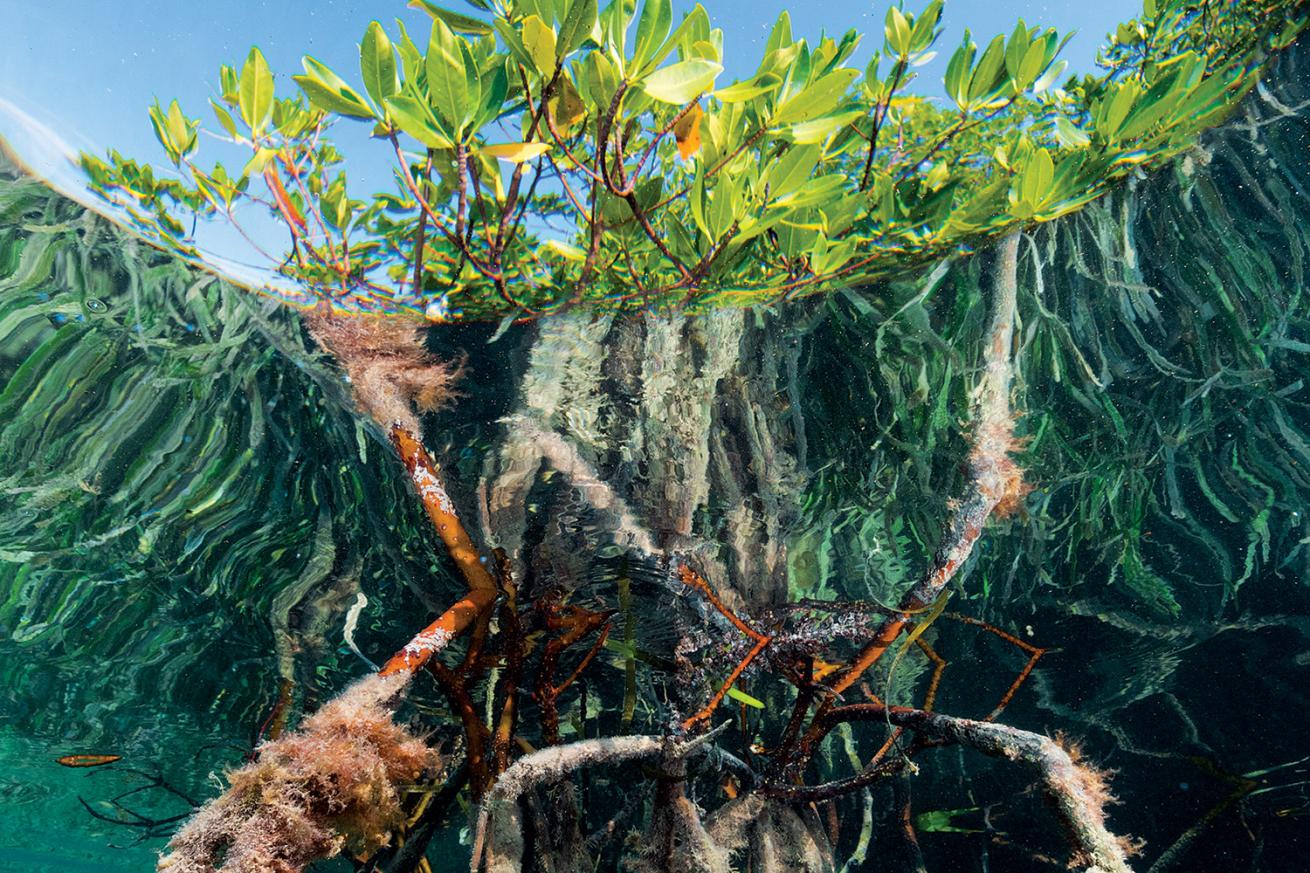
Brandon ColeMangrove trees form critical habitats for marine life.
MANGROVES
I’m not a snorkeler; I’m a diver. Floating just never did it for me. But as we drop into our next site — a narrow channel bordered by red mangroves — it’s evident that scuba is not the best method of exploration for all parts of the Gardens. My bubbles surely would have unsettled delicate microcommunities of vital algae, small crustaceans and nudibranchs sheltered on suspended mangrove roots.
Need to Know
When to Go: The Gardens of the Queen offers unique opportunities year-round, from sea-turtle nesting in July to whale-shark sightings in November.
Dive Conditions: Water temps range from 82 to 78 degrees F. A 1 mm full wetsuit or skin is mandatory for sun protection. Viz from 20 feet in murky channels to 100-plus feet elsewhere.
The Boat: M/V Oceans for Youth is a 100-foot vessel with a 22-foot beam. It has a large dive/snorkel deck with freshwater showers, fully equipped galley, salon, sun deck and four marine heads. It carries up to 24 passengers and a crew of eight.
Price Tag: Runs $3,520 per person, excluding ground transport and port/conservation fees; includes daily snorkel excursions, four optional scuba dives, accommodations and meals. Passengers of legal age may bring adult beverages. Group discounts available for nonprofit and education groups.
Fifty percent of Cuba’s coastline is thick with mangroves; aquatic species make up 5 percent of forests countrywide. Across the world, the rate of shoreline mangrove loss is greater than that of rainforests. Cuba has forbidden clearing of mangroves, and its care in protecting these species is apparent in walls of silversides so thick, I can’t see my buddy 3 feet away.
The presence of key species such as juvenile rainbow parrotfish and goliath grouper is a good indicator of mangrove health. We each pick a species to monitor for the week and keep a rough tab on how many we’ve seen, on a scale from “none” to “abundant.”
Each night, Pina calls for our counts at dinner. “Wayne?” “Few hawksbill turtles,” he says between sips of Cuban rum. “Robert?” “I didn’t see any eels.” Robert is the most eager of all of us, but he has the hardest time spotting the elusive morays. “Laura?” “Abundant blue tang!” Laura’s blue tang are always abundant. I count invasive lionfish, and am the only one who gets a cheer when I report low numbers.
By collecting this data, Pina and Figueredo can assess how well current management is working. The Gardens of the Queen National Park uses adaptive management strategies, meaning that if something appears off — such as a certain species decreasing, or a specific area seeming negatively impacted by humans — the park will take action, often immediately, to rectify the situation. To identify environmental imbalances, scientists must continually conduct surveys and revisit sites to compare for changes. Having each Oceans for Youth guest collect data allows for monitoring more species over long periods of time.
Periodically, Pina and Figueredo publish scientific papers about data collection and management assessments in the Gardens so scientists and resource managers worldwide can look at the information and see how they can apply it.
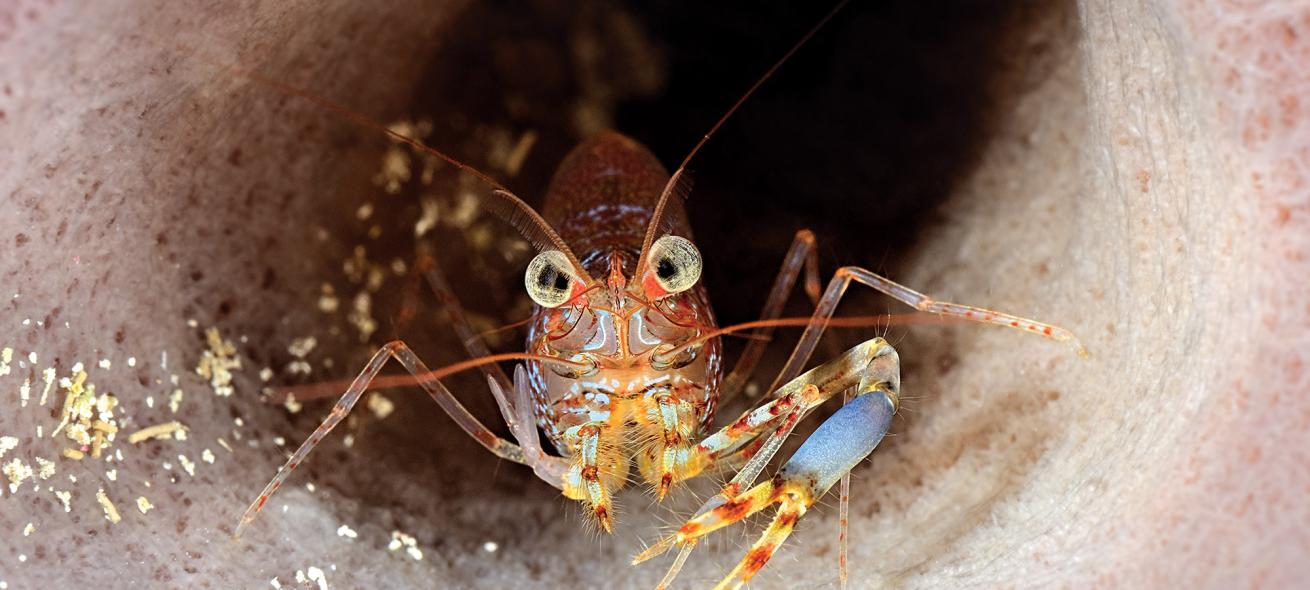
Scott JohnsonA shrimp peeks out of its home inside a pink vase sponge at the dive site Snapper Head.
REEF FLATS
From the nurseries, we venture to where the inhabitants of the Gardens spend their time off the reefs: sea-grass beds, channels and solution holes, nutrient-rich hot spots created when porous layers of limestone on the seafloor erode.
Drifts through channels long and short intersect our exploration. We play among eelgrass under the watchful eye of barracuda. The channels range from 5 to 30 feet deep and act as passageways for all species, from hawksbill turtles and reef sharks to cushion stars and schools of metallic baitfish.
At a site called Snapper City, thousands of snapper whirl through the shallow water. The attractant is the giant solution hole in the middle of the site. Down in the hole, more snapper buzz — until like a rocket a goliath grouper lunges up, startling snorkelers and fish near the top. We pop our heads up, laughing about our chance encounter and the unpredictable biodiveristy of the Gardens.
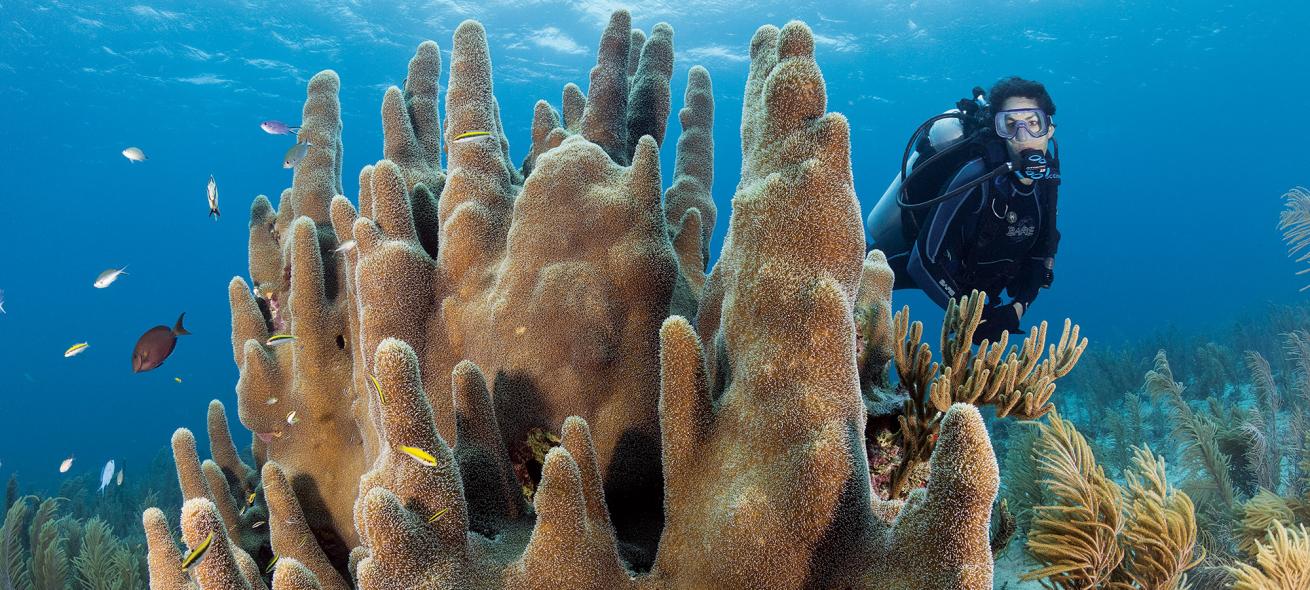
Brandon ColeHuge pillar corals are part of the draw off Cuba.
SHALLOW REEFS
“Have you ever seen a jawfish?” guide Noel Lopez Fernandez asks. “There’s one here — I’ll show you.” Lopez, who has logged more than 8,000 dives in the Gardens, jumps in and immediately finds the hole. I dive down for a better look. The jawfish ducks in before peeking out at me; I hold out as long as my lungs will let me, hoping to see eggs. No cigar. I come up for air wishing I had on a tank.
Lifelong Learning
M/V Oceans for Youth offers two programs: Classroom at Sea for students and EcoExploration for adults. Both programs last seven nights and include snorkeling through a variety of habitats, land excursions, and four optional dives.
Just past the jawfish hole is the reef crest, which separates the reef-flat zone from the fore reef — the shallow and the deep. Hogfish, grouper and massive coral heads freckle the white sandy seafloor. Reef crests, we learn, cut wave energy by 85 percent, which helps protect the Gardens naturally.
I hear the familiar “Toot, toot!” as Pina calls us. Together we round the crest to see what many of our lessons have centered on: highly endangered elkhorn coral. I see the first golden stalk, branching 3 feet tall just under the surface. An astounding number of fish surround just this one piece of coral. As we drift, more and more elkhorn come into view. After hearing for days about its importance, we are elated to finally see how apparent this importance is.
There’s an abundance of life around Acropora palmata that isn’t so distinct across the rows of sea fans, sponges and other corals. Long-spined sea urchins, the protectors of the reef, cover the base of the stalks and the surrounding seafloor. A rainbow-colored cast of characters creates a kaleidoscope reflected off the surface of the water. And we’d thought the rest of the Gardens were impressive.
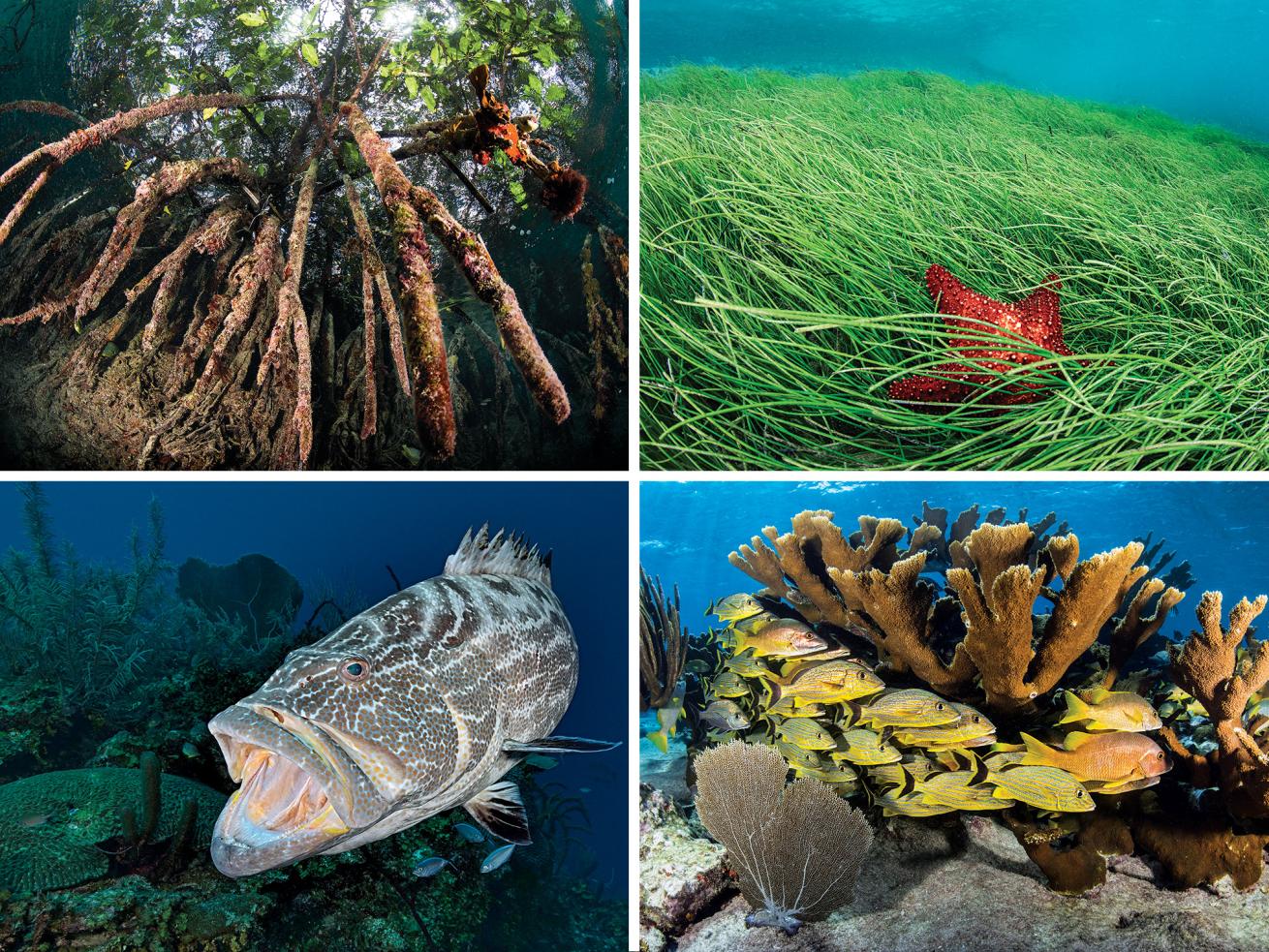
Noam Kortler (2); Brandon Cole; Scott Johnson(Clockwise from top left) Mangroves act as a nursery for most tropical and subtropical species; Sea-grass beds are the restaurants of the ocean, and there are two types of grasses: manatee and turtle, named after the beds’ most frequent patrons; As fish mature, they move to shallow reefs to hunt and reproduce; Deep reefs are where adult species spend most of their lives, enjoying diverse geological formations for shelter and ample sources of food.
DEEP REEFS
At last, we hear those three little words: dive, dive, dive. Peering over the skiff, I see fins. As promised, the silkies are here. We drop down on four swirling sharks spiraling in to check us out. Descending past them, we hover over a reef 40 feet below the surface. Nassau grouper and cubera snapper swim in every direction, but we’re entranced by schools of titanium-clad Atlantic tarpon and friendly green sea turtles.
Seeing the final piece of our puzzle, it’s clear: If any of these habitats is disturbed, the ecosystem is disrupted. If mangroves are cleared, juvenile fish won’t have food and shelter. If deep reefs are overfished, predators might move inshore, disrupting shallow reefs.
On our last afternoon in the water, everyone is slow to get back on the skiff. We toss our gear back on board and float for just a little longer.
The week hit a crescendo among thousands of snapper, schools of silky sharks, and stalks of elkhorn coral taller than a 10-year-old.
But it’s not only in these places that we’ve been awestruck by Cuba’s underwater world. It’s also in the delicate mangrove tunicates growing on roots, the conch tracks crisscrossing otherwise-spotless seafloor, and macro critters hiding out in thick patches of halimeda algae. And it’s in knowing the science and management that has kept this area as it always has been.
Conversation fades as we look around, taking in the beauty of the Gardens one last time. I can’t help but feel a wave of emotion wash over me once again as I revel in the inescapable feeling that I’m in the most special place in the world.

